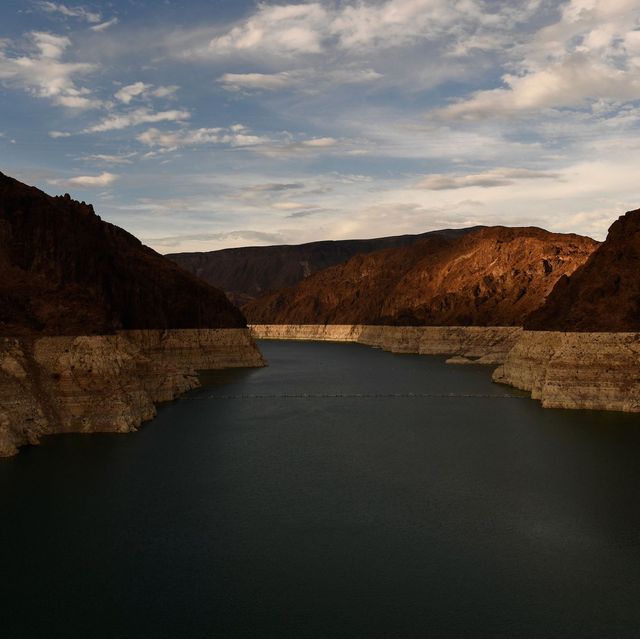This never has happened before. Another triumph for those crafty Chinese hoaxsters. From CNN:
“It’s very significant,” Brad Udall, senior water and climate scientist at Colorado State University, told CNN. “It’s something that those of us in the climate community have been worried about for over a decade, based on declining flows due to climate change.” With the lake expected to remain at around 1,066 feet of elevation into 2022, according to the US Bureau of Reclamation’s latest monthly projections, the agency announced that the Colorado River will go into the first tier of water cuts beginning January 1.
“Given ongoing historic drought and low runoff conditions in the Colorado River Basin, downstream releases from Glen Canyon Dam and Hoover Dam will be reduced in 2022 due to declining reservoir levels,” the report said. Lake Mead provides water to roughly 25 million people in Arizona, Nevada, California and Mexico, according to the National Park Service. Under the complex priority system, Arizona and Nevada will be affected by the tier-1 shortage.
Arizona will see an 18% reduction in the state’s total Colorado River supply, primarily impacting agriculture. Although Nevada will need to adhere to a 7% reduction in its Colorado River water supply in 2022, the state had already reduced its deliveries and no change is expected due to the shortage, according to John Entsminger, general manager of the Southern Nevada Water Authority.
The unprecedented decision by the federal government is bound to have profound ripple effects throughout the entire region that has been served—or, arguably, over-served—by the Colorado. More than 40 million people in the West depend on the river for their water supply. The impact on agriculture is just as profound. From Bloomberg:
Arizona’s reduction will be equivalent to the amount used by about 1 million average households in a year. The cuts will not affect any municipal, industrial, commercial or tribal users. Instead, almost all the cutbacks will fall on farms that receive their water from the Central Arizona Project. The rationing will likely hit hardest in Pinal County, where farmers tend to have the most junior water rights. Farms there will have to let lands go fallow or rely on groundwater that’s already overpumped. While Arizona is trying to cushion the blow by building out groundwater infrastructure, some observers say the cuts will provoke litigation.
“Pinal County agriculture faces a dire reality,” the Arizona Farm Bureau said Monday in a statement. “This will have a devastating impact on each farming family in that county, and the surrounding communities will feel the ripple effects for years to come.”
A lot of the produce we eat during the winter here in the northern latitudes comes from the farms that will be hit hardest by this new policy. So we have sprouts in this game as well. And the urgency increases almost by the day, because California’s probably next.
Should the drought continue next year, California could face supply reductions: the Golden State must forgo water when Lake Mead falls below 1,045 feet.
That’s a strong possibility. The U.S. Climate Prediction Center last week forecast a 62% chance that the La Nina phenomenon in the Pacific Ocean will return this autumn, its second appearance in two years. La Nina typically brings dry winters to the Southwest. While the summer monsoon season this year has brought frequent thunderstorms, they have not made a dent in the drought. And with climate change, many long-term models predict a more arid future for the region.
Going with the flow is no longer an option.

Charles P Pierce is the author of four books, most recently Idiot America, and has been a working journalist since 1976. He lives near Boston and has three children.













